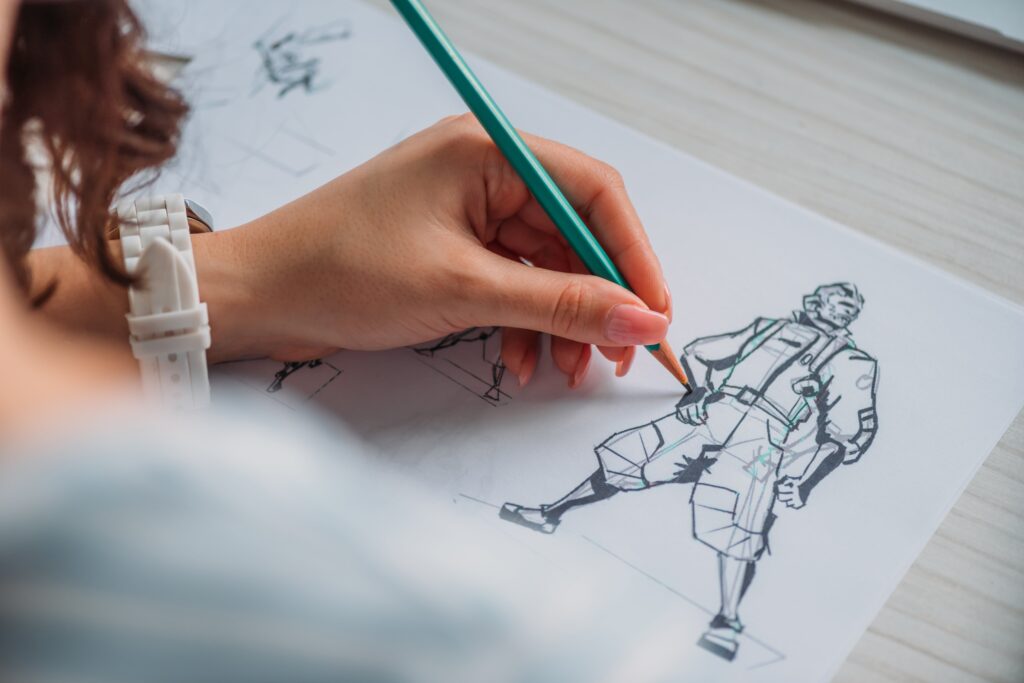Flipbook animation is a creative and captivating way to bring drawings to life through a series of sequential images. Whether you’re a beginner looking to explore this traditional animation technique or an experienced artist seeking to enhance your skills, creating flipbook animations can be a rewarding and enjoyable process. In this comprehensive guide, we will delve into the steps and techniques involved in making flipbook animation, from planning your sequence to bringing your drawings to life with movement.
1. Gather Your Supplies
To get started with creating a flipbook animation, you’ll need a few essential supplies:
- Paper: Choose a stack of lightweight paper or a flipbook sketchpad that allows for smooth flipping.
- Drawing Tools: Use pencils, pens, markers, or any medium of your choice to create your animation frames.
- Light Table or Lightbox (optional): A light table can help you trace and align your drawings accurately.
2. Plan Your Animation Sequence
Before diving into drawing your flipbook animation, it’s essential to plan out your sequence. Consider the story or movement you want to convey and break it down into key frames. Sketch out rough thumbnails to outline the progression of your animation.
3. Start Drawing Your Frames
Begin by drawing the first frame of your animation on the bottom right corner of the paper. Each subsequent frame should be drawn slightly different from the previous one to create the illusion of movement. Remember to maintain consistency in character proportions and movements.
4. Create Smooth Transitions
To achieve fluid motion in your flipbook animation, focus on creating smooth transitions between frames. Pay attention to the spacing and timing of your drawings to ensure a seamless flow when flipping through the pages.
5. Experiment with Timing and Speed
Play around with the timing and speed of your animation by varying the number of frames per action. Adjusting the pace of your drawings can add dynamics and impact to your flipbook animation.
6. Add Details and Effects
Enhance your flipbook animation by adding details, textures, and effects to make your drawings more engaging. Experiment with shading, textures, and dynamic poses to bring depth and realism to your animated sequence.
7. Test Your Animation
Once you have completed drawing all the frames of your flipbook animation, test it by flipping through the pages to see how the movement unfolds. Make any necessary adjustments to improve the flow and coherence of your animation.
8. Share Your Creation
Once you are satisfied with your flipbook animation, share it with others to showcase your creativity and storytelling skills. Consider digitizing your flipbook to share it online or with a wider audience.
9. Practice and Experiment
Like any form of art, mastering flipbook animation takes practice and experimentation. Keep creating new animations, try different styles and techniques, and challenge yourself to push the boundaries of your creativity.
10. Seek Inspiration
Draw inspiration from other flipbook animators, classic animations, and everyday movements around you. Study the works of renowned flipbook artists to learn new tricks and techniques to improve your animations.
Conclusion
Creating flipbook animation is a fun and rewarding way to explore the world of animation and unleash your creativity. By following these steps and tips, you can craft engaging and dynamic flipbook animations that entertain and inspire audiences of all ages.
Key Takeaways:
- Flipbook animation is an accessible and creative entry point into traditional animation techniques.
- Planning your sequence before drawing helps maintain a clear narrative and smooth motion.
- Consistency in proportions and spacing between frames is key to achieving believable movement.
- Smooth transitions and careful timing create fluid, natural-looking animation.
- Experimenting with frame rate and pacing allows for more expressive and dynamic results.
- Adding details, shading, and effects enhances visual depth and appeal.
- Regular testing helps refine motion and identify areas that need adjustment.
- Sharing your finished flipbook fosters feedback and motivation to keep improving.
- Continuous practice and experimentation lead to skill growth and creative discovery.
- Observing and learning from other animators’ work can inspire new ideas and techniques.
To further enhance your animation skills and explore advanced techniques in the world of animation, consider enrolling in the Yellowbrick Animation Industry Essentials online course and certificate program. This comprehensive program offered by New York University can provide you with valuable insights and practical skills to excel in the dynamic field of animation.








